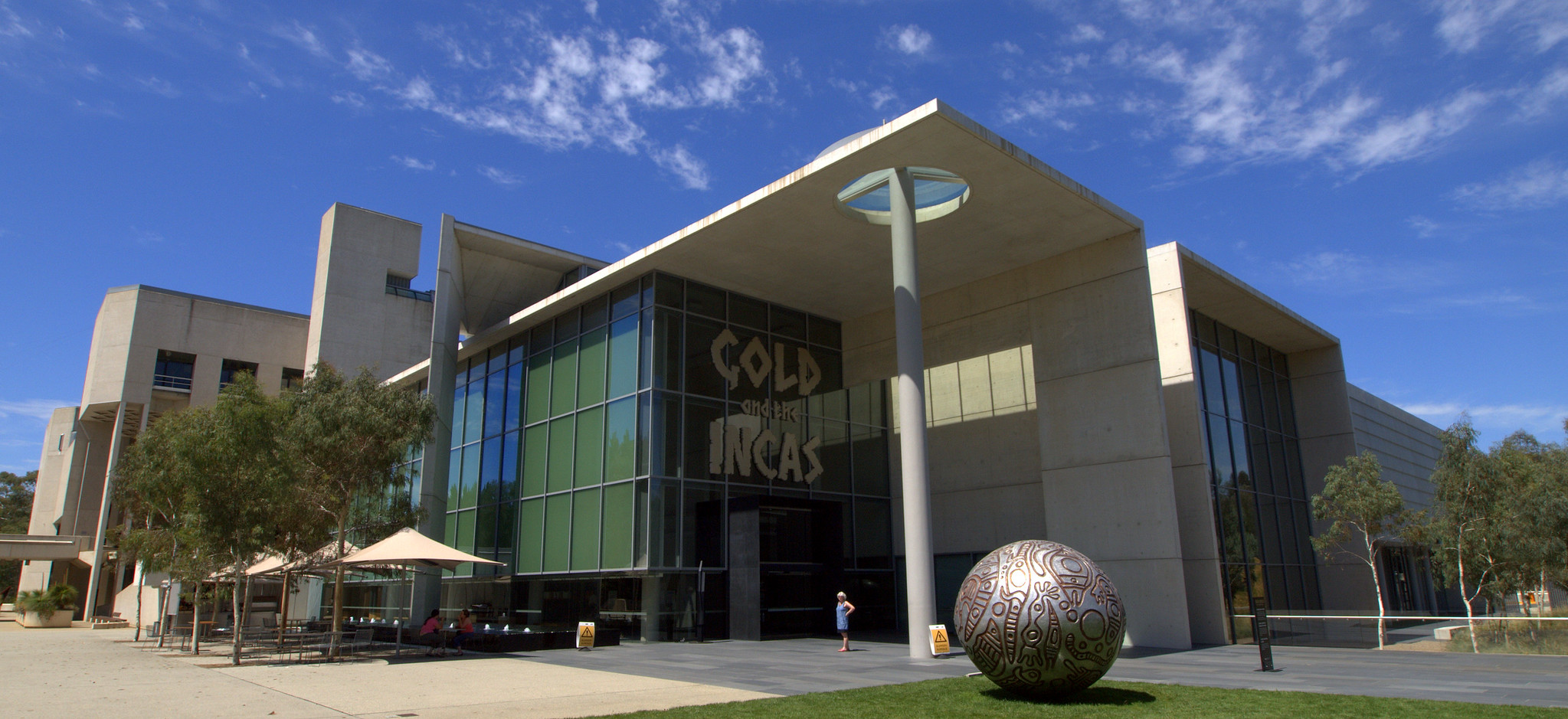The National Gallery of Australia (NGA) is the country’s premier art museum, located in Canberra, the nation’s capital. Established in 1967 and opened to the public in 1982, it houses a vast collection of over 166,000 works of art from Australia and around the world. The gallery’s collection spans various periods and styles, including Indigenous Australian art, European and American art, Asian art, and contemporary art. Designed by architect Colin Madigan, the building itself is a notable example of late 20th-century modernist architecture. The NGA plays a crucial role in preserving, promoting, and showcasing Australia’s artistic heritage while also presenting significant international exhibitions and fostering cultural exchange.
The National Gallery of Australia, located in Canberra, is home to an impressive collection of Aboriginal and Torres Strait Islander art, showcasing the rich cultural heritage of Australia’s First Nations peoples. This vast collection spans thousands of years and includes a diverse range of artistic styles and mediums, offering visitors a unique opportunity to immerse themselves in the vibrant world of Indigenous Australian art.
As you step into the gallery’s dedicated Aboriginal and Torres Strait Islander art spaces, you’ll be immediately struck by the sheer diversity of works on display. From ancient rock art to contemporary installations, the collection tells a story of artistic evolution and cultural resilience. One of the most captivating aspects of the collection is the array of traditional bark paintings, which offer a glimpse into the spiritual beliefs and connection to Country that are central to Aboriginal culture.
These intricate works, created using natural pigments on eucalyptus bark, often depict Dreamtime stories and sacred sites. As you explore further, you’ll encounter a stunning selection of sculptures and ceremonial objects, each with its own unique significance and story. Many of these pieces are adorned with intricate patterns and designs that have been passed down through generations, serving as a testament to the enduring nature of Aboriginal artistic traditions.
Moving through the gallery, you’ll notice how the collection seamlessly blends traditional and contemporary works. This juxtaposition highlights the ongoing evolution of Aboriginal art and its ability to adapt to changing times while maintaining a strong connection to cultural roots. You might find yourself captivated by vibrant acrylic paintings that draw inspiration from traditional designs but incorporate modern techniques and materials.
One of the most striking aspects of the Aboriginal art collection at the National Gallery of Australia is its ability to convey complex narratives and emotions through visual means. Many of the works on display tell stories of creation, ancestral beings, and the deep spiritual connection to the land that is central to Aboriginal culture. As you take in these powerful pieces, you’ll gain a deeper appreciation for the rich storytelling traditions that have been passed down through countless generations.
The gallery also does an excellent job of providing context for the works on display, offering informative plaques and multimedia presentations that help visitors understand the cultural significance and historical background of each piece. This additional information adds depth to the viewing experience, allowing you to appreciate the art on multiple levels.
As you continue your exploration, you’ll likely be drawn to the gallery’s collection of contemporary Aboriginal art. These works showcase the incredible talent and creativity of modern Indigenous artists, who often blend traditional techniques with contemporary themes and materials. From large-scale installations to thought-provoking mixed-media pieces, these works demonstrate the ongoing vitality and relevance of Aboriginal art in today’s world.
One of the most remarkable aspects of the National Gallery of Australia’s Aboriginal art collection is its ability to foster cross-cultural understanding and appreciation. By presenting such a diverse and comprehensive selection of Indigenous art, the gallery invites visitors to engage with Aboriginal culture in a meaningful way, challenging preconceptions and encouraging dialogue.
As your visit comes to an end, you’ll likely find yourself reflecting on the incredible journey you’ve taken through thousands of years of artistic expression and cultural heritage. The National Gallery of Australia’s Aboriginal art collection offers a truly immersive experience that leaves a lasting impression, inspiring visitors to learn more about the rich traditions and contemporary expressions of Australia’s First Nations peoples.
Whether you’re an art enthusiast, a history buff, or simply curious about Indigenous Australian culture, exploring the Aboriginal art collections at the National Gallery of Australia is an unforgettable experience that offers a unique window into one of the world’s oldest and most vibrant artistic traditions.The National Gallery of Australia, located in Canberra, is a significant cultural institution that houses an extensive collection of Australian and international art. Since its establishment in 1967, it has played a crucial role in preserving and promoting Australia’s artistic heritage while also showcasing works from around the world. The gallery’s diverse collection, which includes Indigenous art, contemporary pieces, and historical works, provides visitors with a comprehensive view of artistic expression across various periods and cultures. Through its exhibitions, educational programs, and research initiatives, the National Gallery of Australia continues to be a vital center for artistic appreciation, cultural understanding, and scholarly inquiry, cementing its position as one of the country’s premier art institutions.

